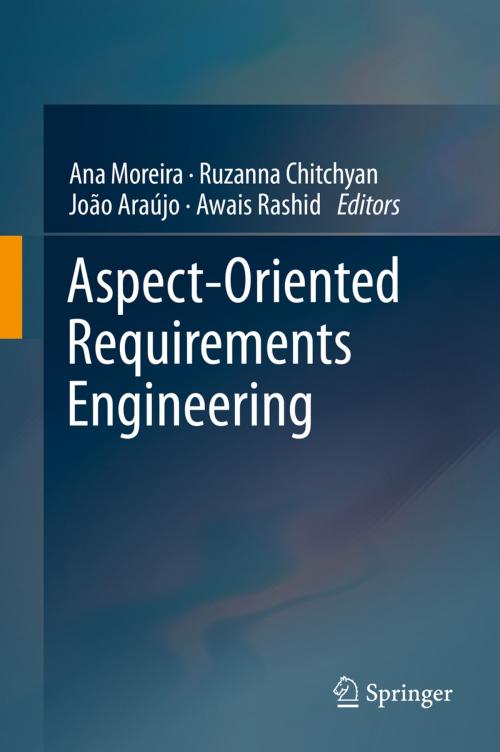Aspect-Oriented Requirements Engineering
Business & Finance, Industries & Professions, Information Management, Nonfiction, Computers, Programming, Software Development, General Computing| Author: | ISBN: | 9783642386404 | |
| Publisher: | Springer Berlin Heidelberg | Publication: | November 19, 2013 |
| Imprint: | Springer | Language: | English |
| Author: | |
| ISBN: | 9783642386404 |
| Publisher: | Springer Berlin Heidelberg |
| Publication: | November 19, 2013 |
| Imprint: | Springer |
| Language: | English |
Broadly-scoped requirements such as security, privacy, and response time are a major source of complexity in modern software systems. This is due to their tangled inter-relationships with and effects on other requirements. Aspect-Oriented Requirements Engineering (AORE) aims to facilitate modularisation of such broadly-scoped requirements, so that software developers are able to reason about them in isolation - one at a time. AORE also captures these inter-relationships and effects in well-defined composition specifications, and, in so doing exposes the causes for potential conflicts, trade-offs, and roots for the key early architectural decisions.
Over the last decade, significant work has been carried out in the field of AORE. With this book the editors aim to provide a consolidated overview of these efforts and results. The individual contributions discuss how aspects can be identified, represented, composed and reasoned about, as well as how they are used in specific domains and in industry. Thus, the book does not present one particular AORE approach, but conveys a broad understanding of the aspect-oriented perspective on requirements engineering. The chapters are organized into five sections: concern identification in requirements, concern modelling and composition, domain-specific use of AORE, aspect interactions, and AORE in industry.
This book provides readers with the most comprehensive coverage of AORE and the capabilities it offers to those grappling with the complexity arising from broadly-scoped requirements - a phenomenon that is, without doubt, universal across software systems. Software engineers and related professionals in industry, as well as advanced undergraduate and post-graduate students and researchers, will benefit from these comprehensive descriptions and the industrial case studies.
Broadly-scoped requirements such as security, privacy, and response time are a major source of complexity in modern software systems. This is due to their tangled inter-relationships with and effects on other requirements. Aspect-Oriented Requirements Engineering (AORE) aims to facilitate modularisation of such broadly-scoped requirements, so that software developers are able to reason about them in isolation - one at a time. AORE also captures these inter-relationships and effects in well-defined composition specifications, and, in so doing exposes the causes for potential conflicts, trade-offs, and roots for the key early architectural decisions.
Over the last decade, significant work has been carried out in the field of AORE. With this book the editors aim to provide a consolidated overview of these efforts and results. The individual contributions discuss how aspects can be identified, represented, composed and reasoned about, as well as how they are used in specific domains and in industry. Thus, the book does not present one particular AORE approach, but conveys a broad understanding of the aspect-oriented perspective on requirements engineering. The chapters are organized into five sections: concern identification in requirements, concern modelling and composition, domain-specific use of AORE, aspect interactions, and AORE in industry.
This book provides readers with the most comprehensive coverage of AORE and the capabilities it offers to those grappling with the complexity arising from broadly-scoped requirements - a phenomenon that is, without doubt, universal across software systems. Software engineers and related professionals in industry, as well as advanced undergraduate and post-graduate students and researchers, will benefit from these comprehensive descriptions and the industrial case studies.















